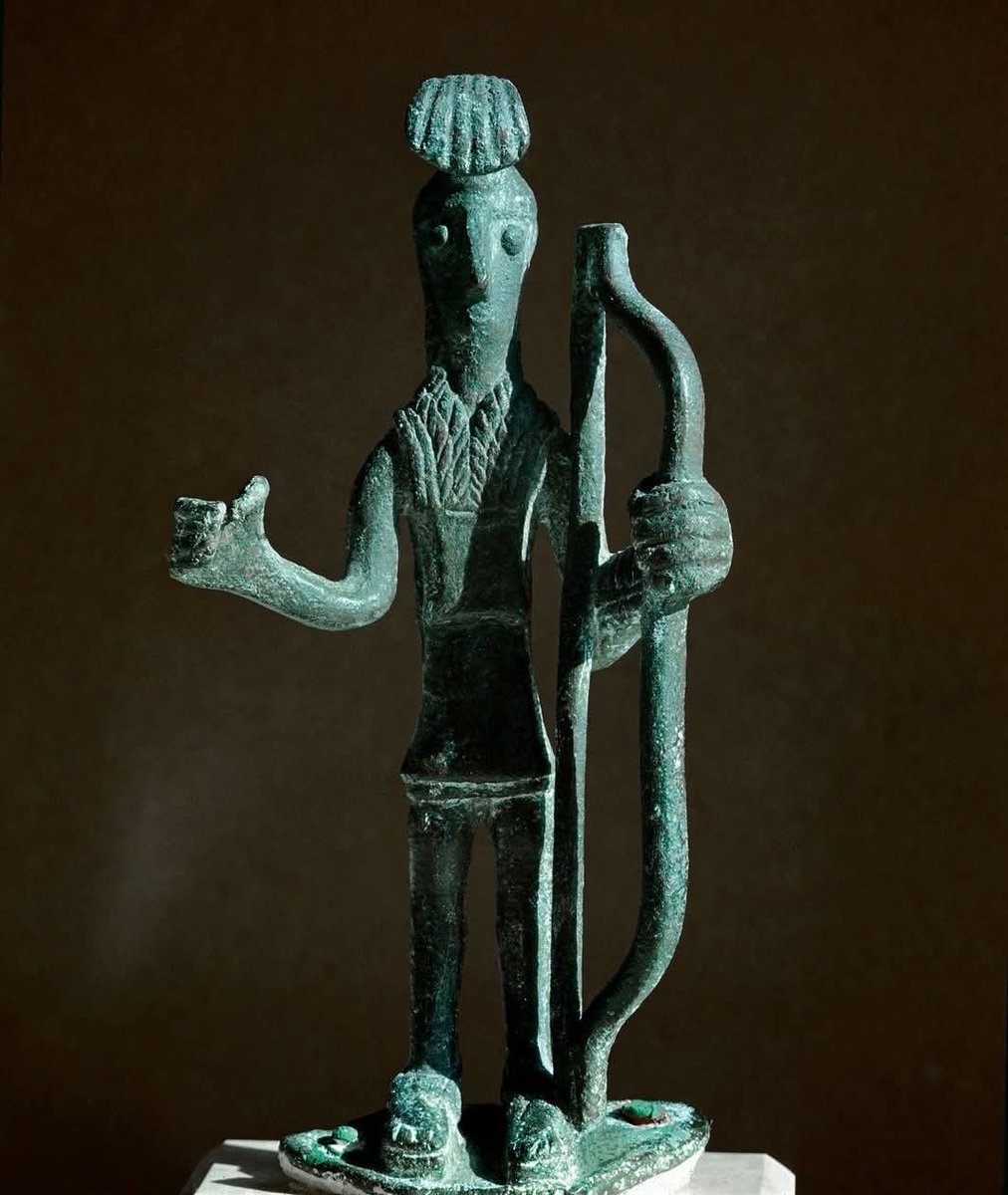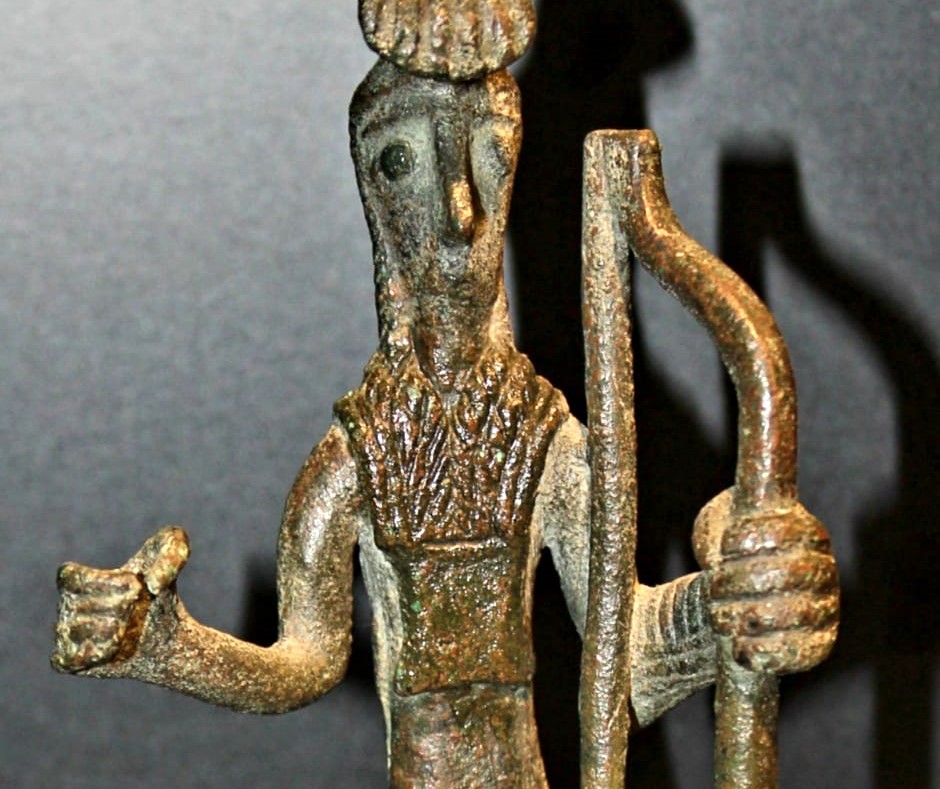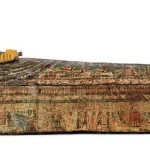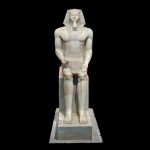Nuragic Bronze Statuette from Sardinia

This Nuragic bronze statuette likely represents a warrior or an important figure from the Nuragic civilization of Sardinia, Italy.
The Nuragic civilization thrived in Sardinia from the Bronze Age (around the 18th century BCE) until the Roman conquest in 238 BCE. These bronze figurines, known as bronzetti, were primarily produced between the 9th and 6th centuries BCE.

Bronzetti provide valuable insights into the appearance, daily life, social hierarchy, and beliefs of ancient Sardinians. They depict various figures, including warriors, priests, leaders, and ritual participants, as well as animals, weapons, and everyday objects. These statuettes were crafted using the sophisticated “lost-wax casting” technique, which involves creating a wax model, encasing it in a clay mold, and then pouring molten bronze into the cavity.

Many of these artifacts were unfortunately recovered through illicit excavations, making it difficult to determine their precise archaeological context, chronology, and provenance. Some scholars have noted similarities between the warriors depicted in bronzetti and the “Shardana,” one of the Sea Peoples mentioned in Egyptian inscriptions, suggesting possible connections across the wider Mediterranean world.
Collection: Museo Nazionale Archeologico, Sardinia











